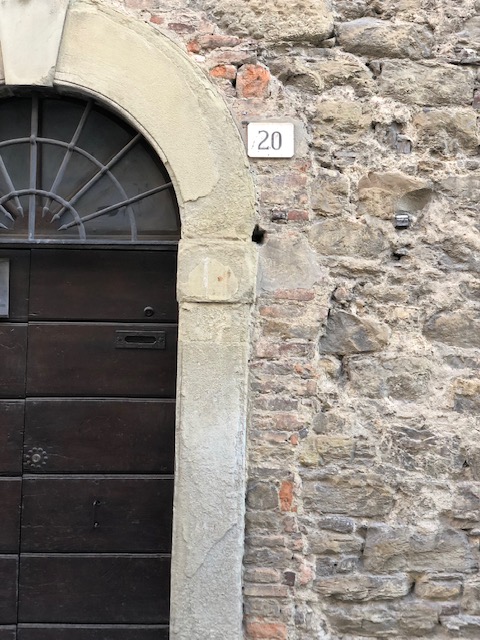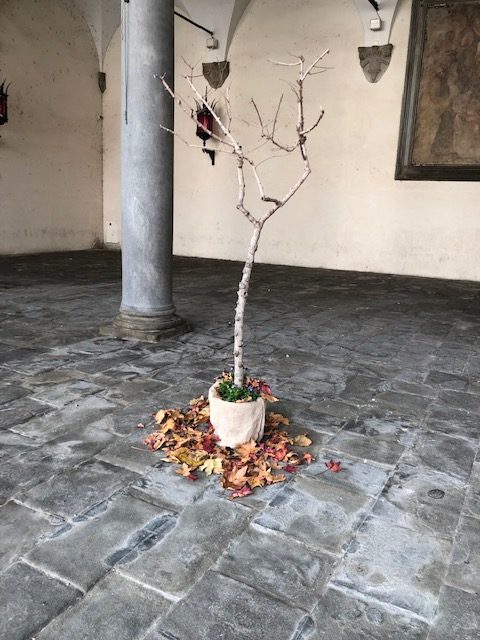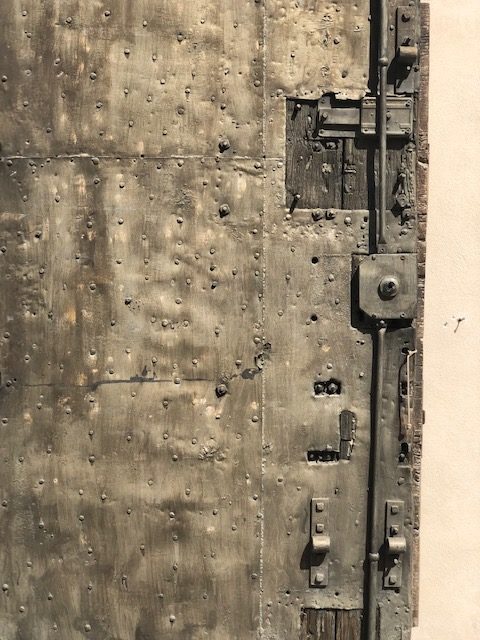

I‘ve a soft spot for crostata di marmellata. In essence, it consists of buttery, short crust pastry, that is smothered with marmellata – the Italian word for all types of jam – and finished with pastry strips, usually arranged in a diamond pattern. The look is very much, old-school and indeed, the signature lattice topping is said to recall, the grid behind which cloistered nuns attended religious services, in a bygone era.
It is a low-key, homey, comfort food kinda sweet tart. The modern form of the crostata is believed to date back to at least the 15th century so no surprise, that each region of Italy has its own version. Then, there are versions within versions using every type of fruit jam, and jams of every combination of fruit. One of my favorites for example, uses marmellata di frutti di bosco literally “fruits of the forest” jam, which is a combo of berries boasting a striking crimson colour, a great fragrance, and a somewhat tarty kick.
For an additional kick, I also like the addition of grappa. This is not just an alcohol driven buzz but is associated with the language that is wrapped around this spirited digestivo. You see, there is something about the way Italians describe the addition of grappa, that is as heartwarming as the alcohol itself. Maybe even more?
Take for example, the addition of grappa to coffee. Caffe corretto, describes when grappa has been added to a shot of espresso to “correct” it. Another variation is the ammazzacaffe or “coffee killer”, whereby an espresso is followed by a wee shot of grappa in a separate glass; in Veneto, there is resentin, “little rinser’ in regional dialect, whereby a few drops of grappa are added to the final sip of espresso to “rinse” the glass; and on it goes… You get the idea: even the smallest splash of grappa, is a charismatic injection of warmth, and personality. As the days get colder, who doesn’t want a bit of that?


This recipe below, starts with the sweet, shortcrust pastry. Once the ingredients are combined, rest the pastry in the fridge for 30minutes. If you have time, a second resting after the pastry has been rolled out, will help maintain its shape, but if you are pressed for time, skip this step. If laying the pastry strips becomes fiddly, persevere. After making crostata a few times, you will get the feel for it and, in the meantime embrace any mistakes. It’s the type of sweet that can be eaten with your hands, shows up at breakfast tables, picnics, and informal family dos so if it is rough, or unrefined, or if the lattice strips are pieced together and bumpy – what of it? It is all good.
I like a low-rise crostata which is as much about the buttery pastry as it is the jam. Usually, I roll out the pastry into a rectangular shape, merely folding up the sides to form an “edge” to contain the jam filling. More typically however, crostata is made in a deeper, circular pie dish with the undulating edges. Take your pick – the quantity below should be enough pastry to make a rectangle 25cm x 35cm or a pie dish of 28cm diameter.
I also like to add whole almonds, lodging them into the spaces created by the crisscrossed pastry lattice. However, not everyone in our house is as devoted to whole nuts as I am so the comprise is typically – a half, almond studded/half plain crostata. If you are using almonds, my tip would be to consider your nut size and space your pastry strips so that each diamond is big enough to house one nut (some nuts are jumbo sized!).
For the jam – use your favourite. Bonus points if it is home made. If you are unable to find grappa, a splash of brandy would probably work as a good substitute but sure – is its addition as endearing as grappa? …. I’m not so sure ….


Jam and Grappa Tart ~ Crostata di Marmellata e Grappa
- 125g cold unsalted butter
- 250g plain flour
- 80g sugar
- 1 whole egg, plus 1 egg yolk beaten
- zest of 1 lemon
- 250g jam – homemade or store bought
- 40ml grappa
- 1 egg extra for the glaze, beaten
- 1 teaspoon sugar
- *optional – whole, unsalted almonds
Chop the cold butter into small pieces. Combine the flour and sugar and rub in the butter until the texture is crumbly and there are no pieces of butter still visible. Alternatively place butter, flour, and sugar together in a food processor and pulse until crumbly.
Add the beaten egg plus egg yolk, and the lemon zest and mix until the pastry comes together into a smooth, elastic ball. Slightly flatten the pastry into a disc and cover tightly in plastic wrap. Rest in the refrigerator for at least 30minutes.
After resting, divide the pastry into two pieces about 1/3 and 2/3rds of the total. On a large piece of parchment paper, roll out the larger piece of pastry into a rectangle 25cm x 35 cm. Place the parchment and pastry onto a baking tray. Fold in the edges of the pastry to from a 3mm high border around all sides (no less than 3mm or the jam may run out and spill over the sides when heated). Refrigerate the pastry for around 30minutes. Roll out the remaining pastry and cut into long strips of amount 1cm-wide. Lay strips on a baking tray and refrigerate for 30minutes.
Preheat the oven to 180 degrees C.
Combine the jam and grappa in a small bowl. If the jam is particularly thick or lumpy, warm over a low heat, or in the microwave to make it more spreadable. Allow to cool slightly.
Remove the pastry from the refrigerator and spread the jam onto the pastry base. Place half the strips diagonally across the tart. Then repeat with the remaining strips, laying them in the opposite direction. Cut and paste any overhanging pieces, broken or too short pieces. Combine the beaten egg with the sugar and brush over the pastry. If using, place an almond in each diamond shaped gap.
Bake for around 30minutes or until the jam is bubbling and the pastry is golden. Allow to cool before serving.

